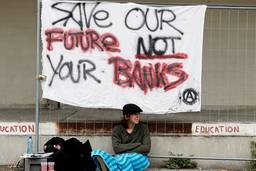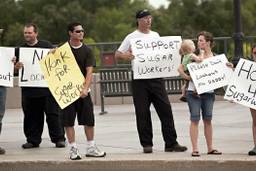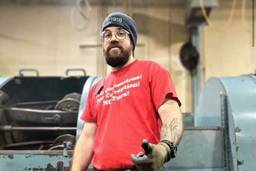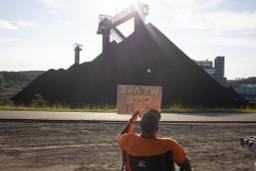A new report details just how difficult the Great Recession has been for working families, as more than 1 out of 3 households earned 200 percent less than the poverty line in 2009. The low-income threshold for a family of four last year was $43,512.
During the Great Recession, between 2007 and 2009, the unemployment rate grew to its highest level in 25 years. With many Americans losing their jobs, the number of low-income families grew to 10 million in 2009, a quarter million increase from the previous year. The findings come as income inequality continues to grow, a grim reminder of how many working families are struggling to pay the bills with stagnant wages.
“The plight of these families now challenges a fundamental assumption that in America, work pays,” the report said.
The findings were based on recent U.S. Census data and published by the Working Poor Families Project, a nonprofit group that advocates for low-income people.
Although economists have declared an end to the greatest downturn since the 1930s, the poverty level has been increasing for three consecutive years, according to the Census. There were 43.6 million people living in poverty in 2009, the largest number since the Census began taking the data 51 years ago. The Working Poor Families report says that since the recession began in 2007, more than 55 percent of America’s labor force has been affected by joblessness, reduced hours or were relegated to part-time work. The report writes:
“When the recession hit, many working families joined the ranks of the unemployed or dropped out of the workforce altogether. Others continued to work but saw their incomes drop as businesses tightened their belts. The recession has been especially hard on men, who were more highly concentrated in the depleted manufacturing, construction and financial sectors.”
In addition to men, minorities and those without a college education were especially affected by the downturn. Last year, 43 percent of households with one or more minority parent were low-income, and the number of children in poverty also increased.
The cycle of poverty has been partly tied to education. Those with only a high school diploma had an unemployment rate as high as 15 percent during the Great Recession. More job openings require a higher education and the steady decline of manual labor jobs have created a more competitive market. More than half of the low-income families had parents with only a high school diploma.
The disparity between the rich and poor is also steadily growing. Income inequality has increased by 5 percent since 2007. The top 20 percent of households take in almost half the wealth, the report said. What’s more, the top earning families earned 10 times more than those at the bottom.
A large reason for the gap is that wages have not increased even as productivity continues to rise. Wage stagnation has been one of the most common consequences of the downturn, according to one public opinion poll. As the Economic Policy Institute pointed out in August, wages “grew at less than half the rate they were growing during the period immediately prior to the recession.” From a long-term perspective, the real average hourly earnings have practically remained unchanged for 35 years. In other words, productivity growth has not transferred to wage gains.
The Working Poor Families suggests public policy should be aimed at improving these wages and benefits for lower-income workers, and supports expanding education and job training for adults. But impending political changes in the nation’s capital may create difficulties to enact such improvements. The Washington Post lays out the coming legislative landscape:
“And now, with a spate of fiscal conservatives poised to enter Congress and with policymakers more tightly focused on the nation’s huge budget deficit, the prospects of maintaining past spending levels on programs that help enable social mobility are dimming.”
The economic security for lower-income people is clearly at stake. And the large amount of the workforce still hasn’t seen their hard work pay off. As the new leadership takes charge next year, the challenge will be creating not just sustainable jobs, but addressing the widening wage distribution gap for many struggling Americans.






